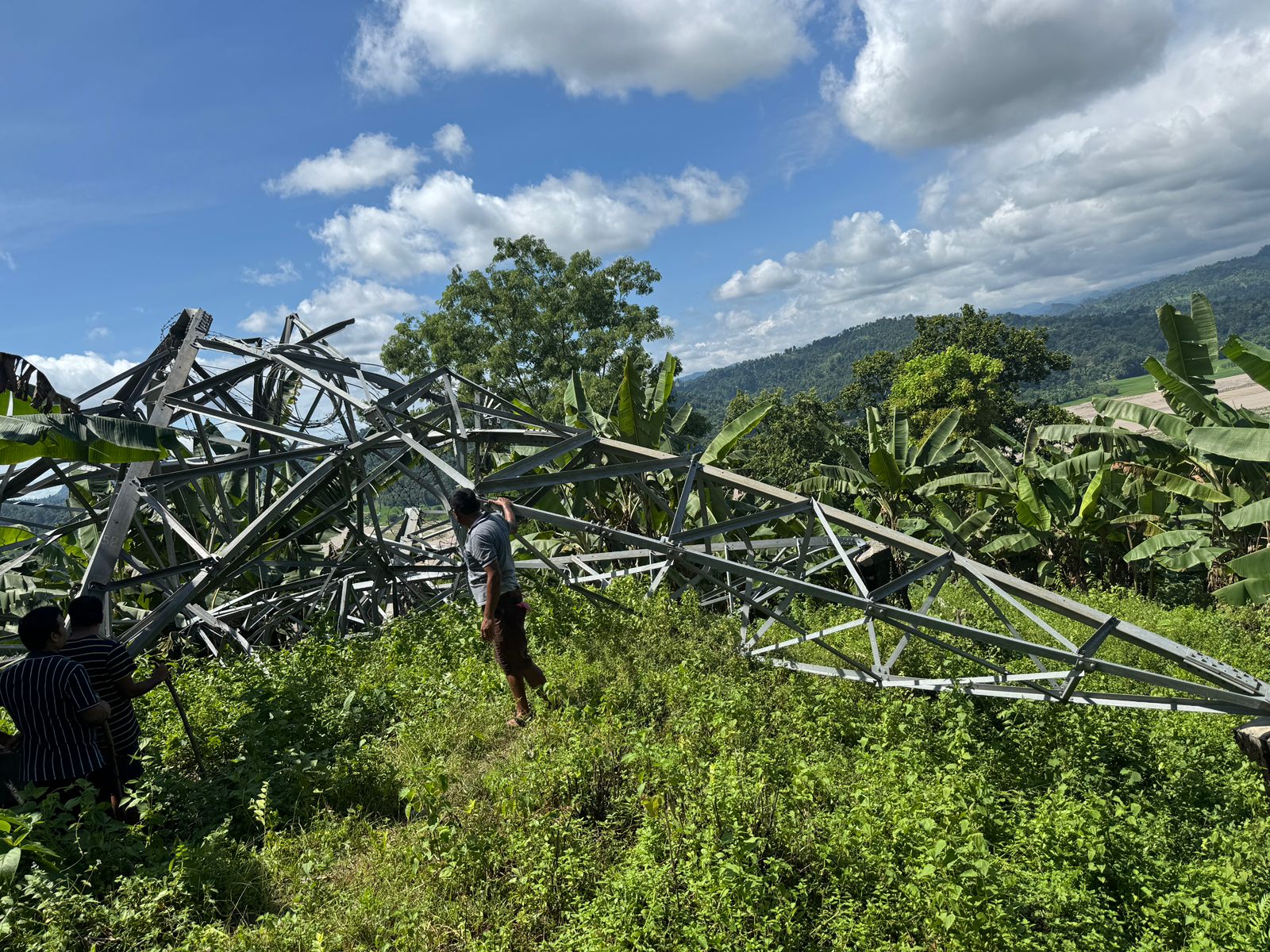Nepal’s power sector faces billions in losses for second year due to floods and landslides

KATHMANDU: Nepal’s power sector has suffered significant financial losses for the second consecutive year, with damages amounting to approximately NPR 5 billion this year, according to the Ministry of Energy, Water Resources, and Irrigation. The heavy rains starting on September 25 (10th Ashoj) have caused substantial damage to energy and irrigation sectors, with the losses expected to rise. Additionally, four employees and security personnel from the Upper Tamakoshi Hydropower Project are still missing.
Last year, floods and landslides in eastern Nepal resulted in over NPR 10 billion in damage to hydropower projects and transmission lines. Despite prior weather forecasts from the Department of Hydrology and Meteorology and subsequent precautions, the damage could not be avoided, stated Energy Minister Dipak Khadka. He added that while reports from various regions are still coming in, more significant losses were averted thanks to timely warnings issued to the hydropower projects. “Had there been no early warnings, the damage would have been even more severe,” said Minister Khadka.
Although last year’s floods caused around NPR 10 billion in damage in the eastern region alone, this year’s damage is relatively lower. Minister Khadka credited precautionary measures such as halting overnight work and suspending transportation at hydropower sites for reducing the overall impact. However, the ministry has reported a disruption in the production of 1,100 MW of electricity due to the damage caused by floods and landslides to power plants, transmission lines, and distribution systems.
Among the affected hydropower plants, 11 with a combined capacity of 626 MW have ceased operations, and production at several facilities has been completely halted, reducing electricity production by approximately 1,100 MW.
In addition, 15 under-construction hydropower projects with a total capacity of 1,010 MW have also sustained significant damage, confirmed Energy Ministry Secretary Suresh Acharya. Kulman Ghising, Executive Director of the Nepal Electricity Authority, noted that the Upper Tamakoshi Hydropower Project suffered substantial damage, and four employees swept away by the river remain missing. He added that the control room at the dam site was completely destroyed, and key infrastructure such as the settling basin, box basin, and box culvert had been severely affected.
“It’s uncertain when the reconstruction will be completed. If repairs are not finished by winter, energy management could face severe challenges,” Ghising warned.
In the eastern region, three towers on the Kabeli Corridor were damaged, leading to a 200 MW power outage. Ghising also reported that power supply to Ilam, Phidim, and Taplejung had been cut off, but efforts are underway to restore supply by backfeeding from Damak. However, logistical issues such as a lack of air tickets have delayed the deployment of restoration teams.
Additionally, the Tamakoshi River washed away a tower on the Khimti-Lamosangu transmission line, preventing the supply of 200 MW of electricity to Kathmandu. Ghising also expressed concern about a high-risk tower on the Khimti-Dhalkebar 220 kV transmission line, stating that if it is damaged, it could disrupt 800 MW of electricity transmission.
“Damage to a single tower can have far-reaching consequences, as it affects multiple power projects’ ability to transmit electricity,” Ghising noted.
Flooding and landslides have also caused severe problems in the distribution lines. Ghising explained that poles have fallen and transformers are malfunctioning, leading to power cuts to prevent potential human casualties. However, power has been restored in most areas.
Impact on Electricity Exports
The damage to Nepal’s power production and transmission infrastructure has also affected electricity exports to India. Ghising reported that Nepal, which had been exporting around 850 MW of electricity, is currently exporting only 250-300 MW. He added that in the event of a domestic shortfall, exports would be halted to prioritize internal distribution.
“Yesterday, we had bid to export around 800 MW, but due to the floods and landslides, we were unable to meet the supply, and penalties may apply,” Ghising said.
Call for Private Sector Support in Reconstruction
The Independent Power Producers’ Association of Nepal (IPPAN) expressed concern over the extensive damage sustained during the floods, emphasizing that last year’s repairs were still incomplete when another wave of destruction hit. IPPAN President Ganesh Karki highlighted ongoing disputes between the Ministry of Finance and the Ministry of Energy over VAT exemptions, warning that without a resolution, the private sector would struggle to expedite the reconstruction of affected projects. Karki also mentioned that materials washed away by the floods would need to be urgently imported, necessitating a prompt decision on VAT exemptions. Additionally, damaged roads and bridges pose a risk of delaying project completion, and Karki called for support from the ministry and authorities in facilitating soft loans and reconstruction.
Minister Khadka assured that the government would help facilitate the reconstruction of hydropower projects and ensure the timely release of insurance payouts.
According to the Ministry of Irrigation, the floods and landslides have caused an estimated NPR 1.5 billion in damage to irrigation systems and river control projects. The Sunsari-Morang Irrigation Project sustained around NPR 50 million in damage across 10 branch canals, while the Bagmati Irrigation Project’s eastern and western main canals and branch canals suffered an additional NPR 54 million in damage. Similarly, an estimated NPR 30 million in damages were reported in the Jhajh Irrigation Project.
In Sindhuli, the under-construction coffer dam of the Sunkoshi-Marin Diversion Multipurpose Project was submerged, with damages difficult to estimate, said Director-General Sanjiv Baral. The Mahakali Irrigation Project in Kanchanpur and other regions reported NPR 1.14 billion in losses from floods during the month of Bhadra.
Moreover, continuous rains from September 26 to 27 (11th and 12th Ashoj) caused riverbank erosion, submergence, and additional flooding, leading to further damages of NPR 1.16 billion in river control areas. The ministry estimates a total loss of NPR 4.35 billion, including NPR 1.35 billion for river control and irrigation projects and NPR 3 billion for hydropower plants.














Facebook Comment